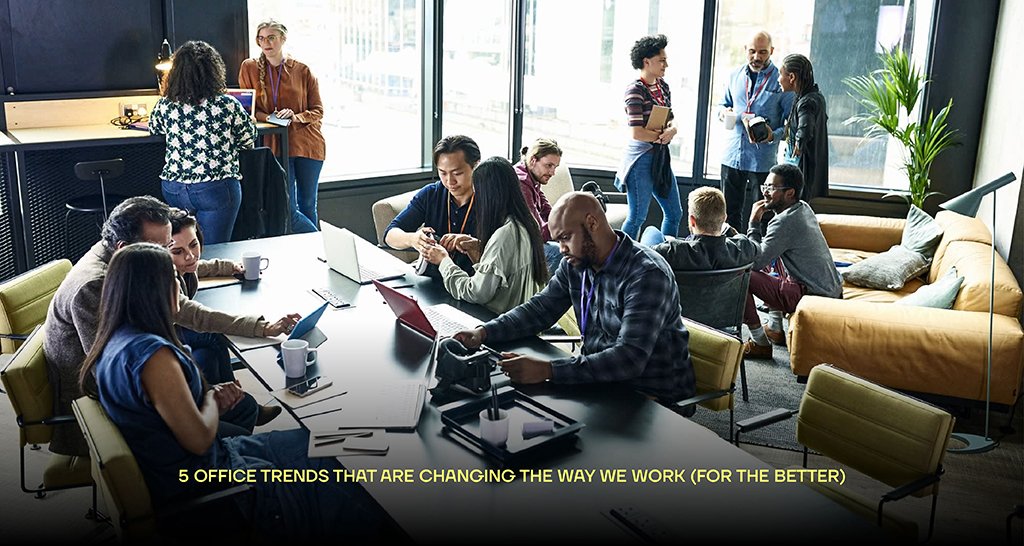The conventional office, as it was previously understood, is experiencing a significant transformation. Influenced by technological advancements, evolving employee expectations, and an increased emphasis on work-life balance, workspaces are transitioning into more dynamic, inclusive, and adaptable environments. These changes are not only redefining our work practices but also improving employee well-being and productivity. Below are five office trends that are positively transforming the contemporary work experience.
- Hybrid Work Models
The pandemic accelerated the adoption of remote work, establishing the hybrid model as a permanent fixture. Organizations are progressively permitting employees to divide their time between home and the workplace. This flexibility empowers workers to manage their schedules more effectively, resulting in heightened job satisfaction and diminished burnout. Employers also gain advantages, as providing hybrid options can broaden talent acquisition beyond geographical constraints and lower the overhead expenses linked to maintaining full-time office environments.
- Emphasis on Employee Well-being
Progressive organizations are placing a high priority on the mental and physical well-being of their employees. This commitment extends beyond merely providing health insurance. Modern workplaces now include wellness rooms, standing desks, access to mental health support, flexible working hours, and even on-site yoga or meditation classes. By cultivating a culture centered on well-being, companies are experiencing enhancements in employee engagement, morale, and overall retention.
- Tech-Enhanced Collaboration
As teams increasingly operate in a distributed manner, the necessity for digital collaboration tools has grown significantly. Platforms such as Slack, Microsoft Teams, and Zoom have become integral to contemporary workplaces, facilitating smooth communication irrespective of geographical barriers. In addition to fundamental tools, organizations are also allocating resources towards virtual whiteboards, project management applications, and AI-driven productivity solutions that enhance workflow efficiency and ensure team alignment. These technologies empower teams to work together in real-time, whether they are co-located or separated by vast distances.
- Eco-Friendly Office Design
Sustainability has become a focal point in office design. Companies are increasingly implementing environmentally friendly practices, including energy-efficient lighting, sustainable materials, waste reduction initiatives, and the incorporation of indoor plants. These decisions not only benefit the environment but also enhance workplace ambiance, leading to improved employee satisfaction. The prevalence of LEED-certified buildings and biophilic design features underscores a company’s dedication to environmental stewardship.
- Diverse and Inclusive Workplaces
The concepts of diversity and inclusion have transitioned from mere buzzwords to essential business imperatives. Organizations are striving to foster workplaces where every employee feels appreciated and included, irrespective of their background. This effort encompasses the modification of recruitment processes, the provision of inclusive benefits, and the implementation of diversity training programs. Consequently, this leads to a more innovative and engaged workforce. Research consistently indicates that diverse teams achieve superior performance compared to their less-diverse peers, thereby rendering inclusivity not only a moral obligation but also a strategic advantage.
Conclusion
These workplace trends signify a significant transition towards a more human-centered environment that prioritizes flexibility, well-being, collaboration, sustainability, and inclusivity. As companies evolve and innovate, they are not only enhancing business results but also fostering workspaces where individuals can genuinely flourish. The future office focuses less on the physical location of work and more on the methodologies of work, with these trends leading the charge.
